

Fun with Fotos revisited, Part 2
Hello from Pomona, where I'm ringside for the second day of the Automobile Club of Southern California NHRA Finals, and welcome to Part 2 of my reprint of my Fun with Fotos column, which originally ran on the Insider last December and has been making the rounds on the Internet via e-mail under numerous subject likes like "Memories!" and "Great old dragster photos" and "The way it was."
Because it was so popular and came with a ton of great follow-up from the Insider Nation, I decided to reprint it here, including my original comments in bold and additional information in italic.
Enjoy!
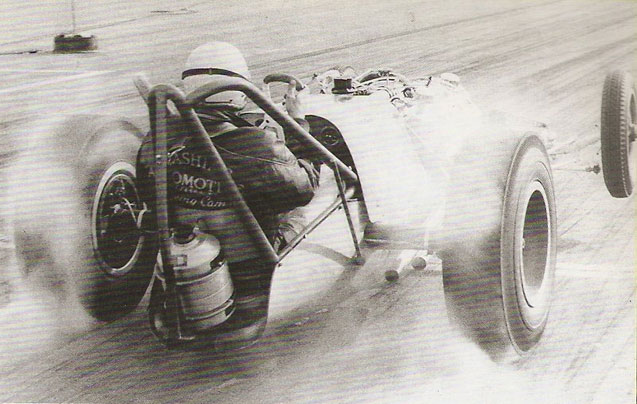 |
Here's how those early dragsters got their nickname; the driver sat behind the rear tires like a rock in a slingshot.
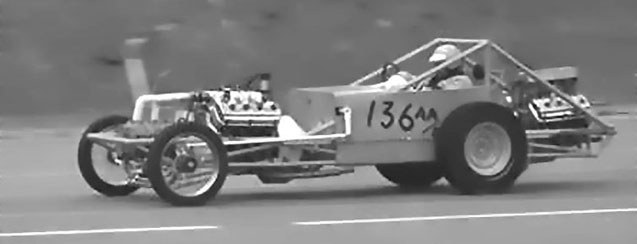 |
A couple of engines, four tires, a little extra tubing, a welder, and there's little that early drag racers couldn't -- and didn't -- try.
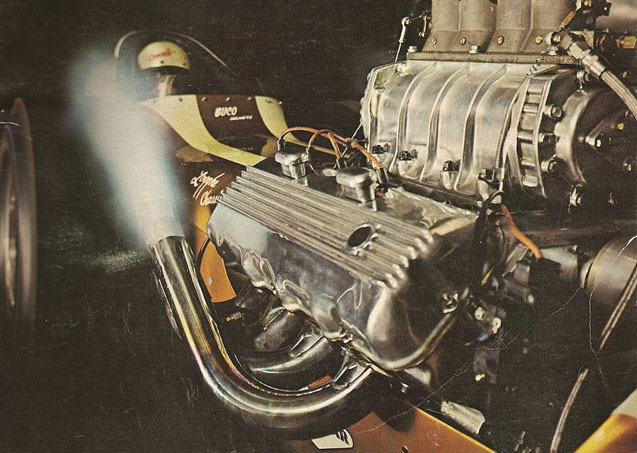 |
I looooooooove this shot. The photographer did such a great job of exposing it and allowing you to see every detail, nut, and bolt on the blower. Arthur Trim tells me that this is Connie Kalitta's Logghe-chassised Ford-powered digger, photographed on a chassis dyno in one of Ford's labs.
A few people pointed out that the oil-filler cap on the valve cover of Kalitta's SOHC mill was missing in the shot.
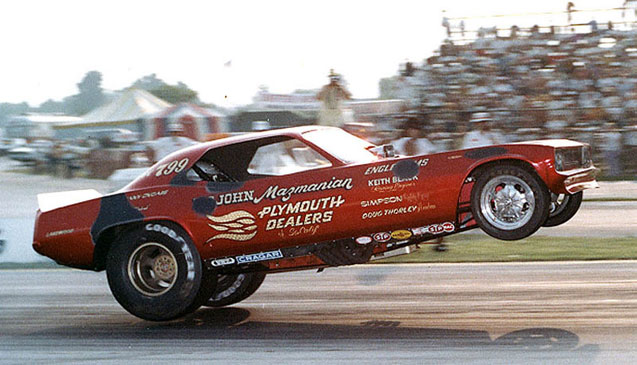 |
Indy is a place where magical things happen. Look closely, and you can see that "Big John's" battle-scarred 'Cuda has all four tires off the ground.
The great photo of "Big John" Mazmanian's 'Cuda with four-wheel liftoff in Indy was shot by Larry "Max" Maxwell of L&M Photos according to Norman Blake. Also, Bill Burns, in responding to my observation that the car was battle-scarred, wrote, "I’m not positive, but I believe the battle scars are from the famous 'net' at the end of Green Valley Raceway in Texas. There was a big race there the week before Indy one year, and several of the California cars stopped by on their way east. It was the most beautiful Funny Car I had ever seen before its trip over the hill and into the net there."
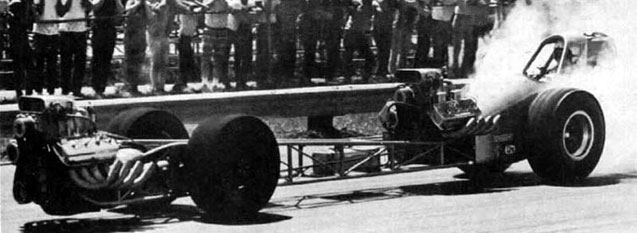 |
Not all new ideas were good ones; Exhibit A is Noel Black's two-engine, four-wheel-drive Top Fueler from 1967.
Dan Tuttle dropped me a line to say that Noel Black's twin-engine car actually wasn't a Top Fuel car but that it was a Bonneville Streamliner nicknamed the Rhinoceros, in which he was later killed. "Reportedly, the car was well above 400 when it lost its belly pan," he said. "Apparently, [this photo] was another test."
Fabled quarter-mile photog Steve Reyes, who shot the above pic, tells me the unique-looking car was photographed at Sacramento Raceway.
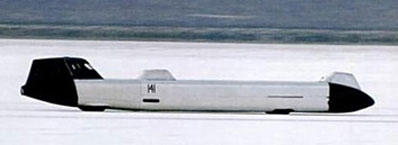 |
I found mention of the car in "Landspeed Louise" Noeth's book, Bonneville: The Fastest Place on Earth. Here is a picture of the car with bodywork taken by George Callaway. Noeth says the Rhinoceros name came from the body bumps to accommodate the engines.
Drag racing historian Bret Kepner said that the car was created by Black and partner Bert Peterson at their B&N Automotive shop and was never designed to be a dragster at all. "It was purely a land-speed-record vehicle that because of its bizarre chassis and drivetrain configuration needed extensive testing, and the dragstrip was pretty much the only place to do it," he wrote. "Officially known as Motion 1 but dubbed the Rhinoceros when carrying its full body panels, the car crashed at 382 mph during the SCTA SpeedWeek event at Bonneville in 1970. Black died as a result of the crash."
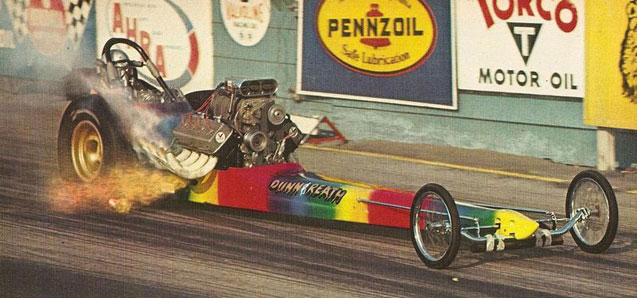 |
Call me an astute observer, but I reckon that "Big Jim" Dunn was pretty much done for this run at Lions in the rainbow-hued Dunn & Reath digger.
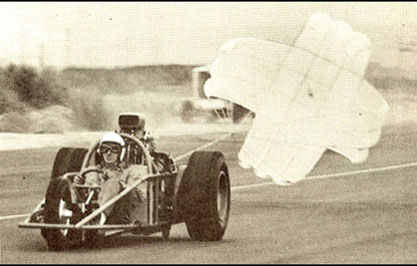
Who says you need four wheels?
|
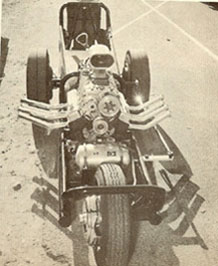
"I'll take Scary Fast Tricycles
for $500, Alex." |
I got a lot of feedback on the three-wheel dragsters along with solid IDs on both. Cliff Morgan and John Pecora wrote to say that the front-engine car belonged to Kenny Ellis, and Steve Gibbs wrote that the rear-engine car was the Cook Bros., Jahns & Hedges entry driven by Jeff Jahns.
Morgan noted that "Ellis was the most famous with an almost conventional front-motor car, which had a tendency to wheelie down the track, especially in the lights." Added Pecora, "Ken is still at it doing fabrication but is stricken with cancer and is fighting with all he has. This photo, I think, is of the third three-wheeler. I built a complete replica of this car for him and gave it to him and son. His son wants to show it off at various events."
Of the other car, Gibbs reminisced, "One of the things that made the sport so appealing in the '50s and '60s was that you never knew what would show up next. The rules were wide open. [This is ] one of the cars that was nonconforming in just about every aspect. It was a rear-engine sidewinder, three-wheeler, using air jacks (à la Pete Robinson) to launch the car ... all with a fuel-burning small Dodge Hemi. It had a body but was not used much. The car had a short life and crashed at 'the Beach.' Driver Jahns got out of it, but it rearranged his nose. I can't imagine how today's tech guys would react if this car were to show up again."
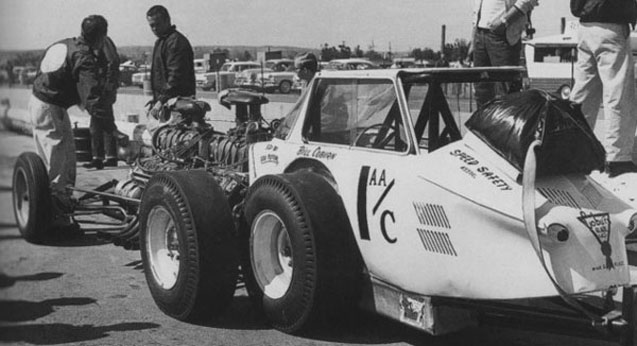 |
In the same vein, who says you even need four wheels or three wheels? The famed Leffler-Coburn Iron Mistress coupe had six! In a true example of the sum of the parts not being equal to the whole, Neil Leffler and Bill Coburn each took the fuel-burning Hemis from their competition coupes and paired them for this interesting experiment. It wasn't real fast, but it was spectacular.
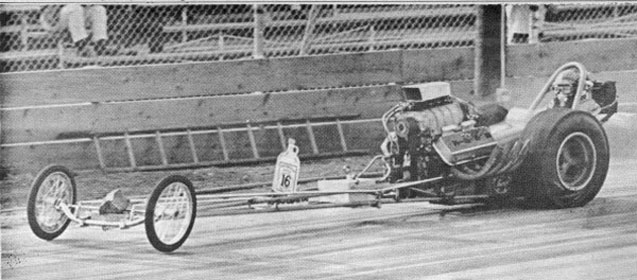 |
We've seen lead weights and tubes filled with lead shot as front-end ballast, but a rock? I kid you not. Clearly, the Red Mountain Boys knew how to rock.
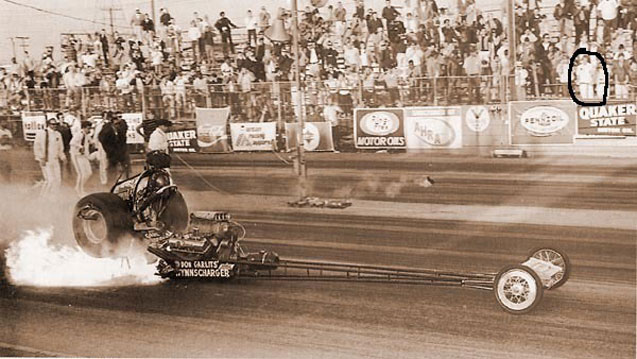 |
I think we've all seen the classic photo of Don Garlits' career-changing transmission explosion at Lions, but this is Jon Asher's less-seldom-seen but equally-breathtaking downtrack angle. I'm not sure who circled the fan in the stands or why, but that's how this image was posted.
A whole host of people surmised – as I did privately – that the circled fan in this scan of Asher's Garlits explosion photo may have been the fan injured by the shrapnel, some of which keen-eyed readers point out can be seen in the photo. Larry Sutton, who was the starter and who waded into the stands to save the fan's life, confirmed to me that that is the general area where he found the injured spectator, whom Lions historian Don Gillespie indentifies as Tim Ditt.
A previous Insider column on Sutton included his heroic efforts to save Ditt's life, but none could have expected that Sutton and Ditt would be reunited nearly 40 years after this infamous moment, a reunion recounted in this Insider column.
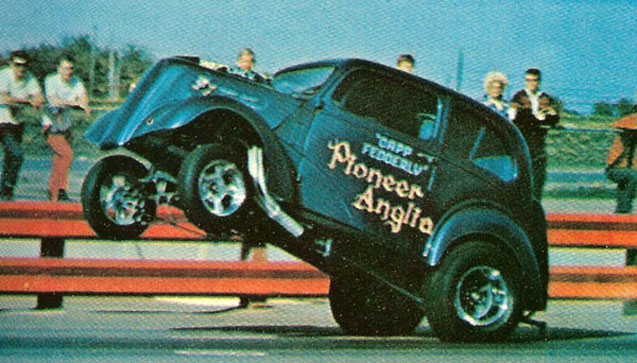 |
I've never seen this car before, but it can't be any mistake that the names on its side are Capp and Fedderly, as in future Top Fuel partners (and Indy winners) Terry Capp and Bernie Fedderly. Both are still at it years later, Capp in nostalgia racing and Fedderly as Austin Coil's alter ego on the John Force team.
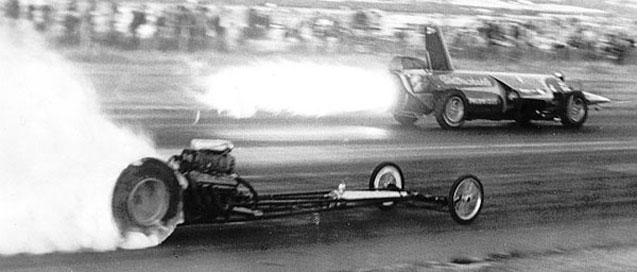 |
The first rule of running against a jet dragster: Always leave first.
Steve Justice reported that this photo features J.D. Zink in Romeo Palamides' Untouchable going off against Don "Mad Dog" Cook at Fremont.
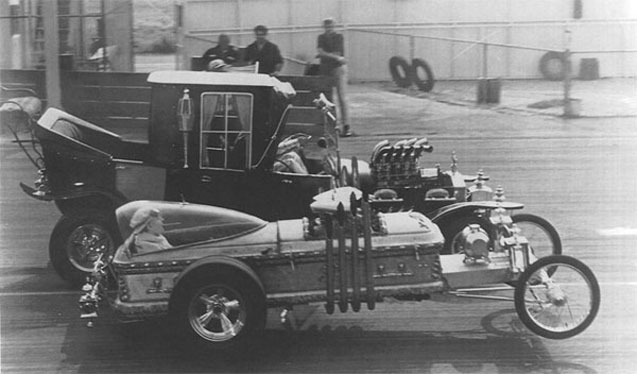 |
Herman Munster, far lane, and Grandpa dueled at Lions in a ghoulish go that was featured on the popular television show.
I did a whole follow-up on the Munstermobile thing here, with some outtake photos of the 1965 "race" at Lions and photos of the coach under construction. A munsterously good read.
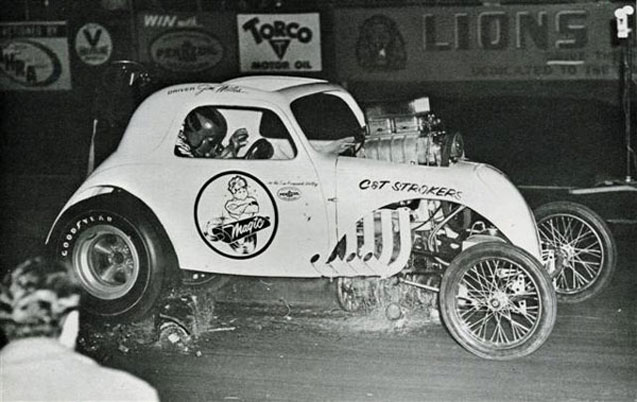 |
The driver's reaction in this photo is classic after his blown Fiat puked all over the Lions starting line.
Bob Nielsen was one of several who wrote to say that the great shot of the exploding Fiat features the Magic Muffler Fiat driven by Jim Miles. "This occurred in 1966," he wrote. "This photo was actually taken by Ron Lahr. What was moderately unique about this photo is the superb timing – parts still coming out the bottom of the engine and the car about to run over the oil pan.
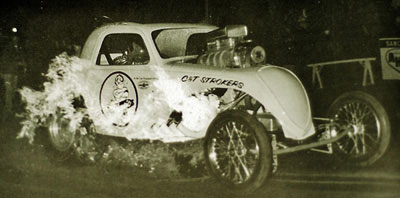 |
"Jere Alhadeff was positioned a little farther downtrack and caught the same engine explosion milliseconds prior to Ron Lahr’s photo. Alhadeff’s photo shows the car engulfed in the engine explosion flames and the oil pan just starting to depart (it is still immediately under the engine)." I also found that photo on The H.A.M.B. forum, as shown here at right.
The original photo also hit home with a reader named Marty, who used to have the pic plastered on his bedroom wall. "I can't believe you have that photo of the guy runnin' over his own crankshaft in the Fiat," he wrote. "I had that hanging in my room as a kid. It's so cool I just laugh like an idiot at it. Do you know if that photo can be bought in a poster form or where it might be found?"
You can buy the pictures at Dave Wallace's super-swell HotRodNostalgia.com site: direct link.
OK, kids, that's it for the recap. I'm going to tune back in to what's going down in Pomona and the crowning of this year's Full Throttle world champs. It's gonna be a barnburner in Top Fuel!



















































